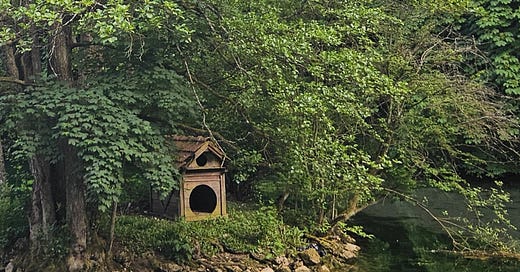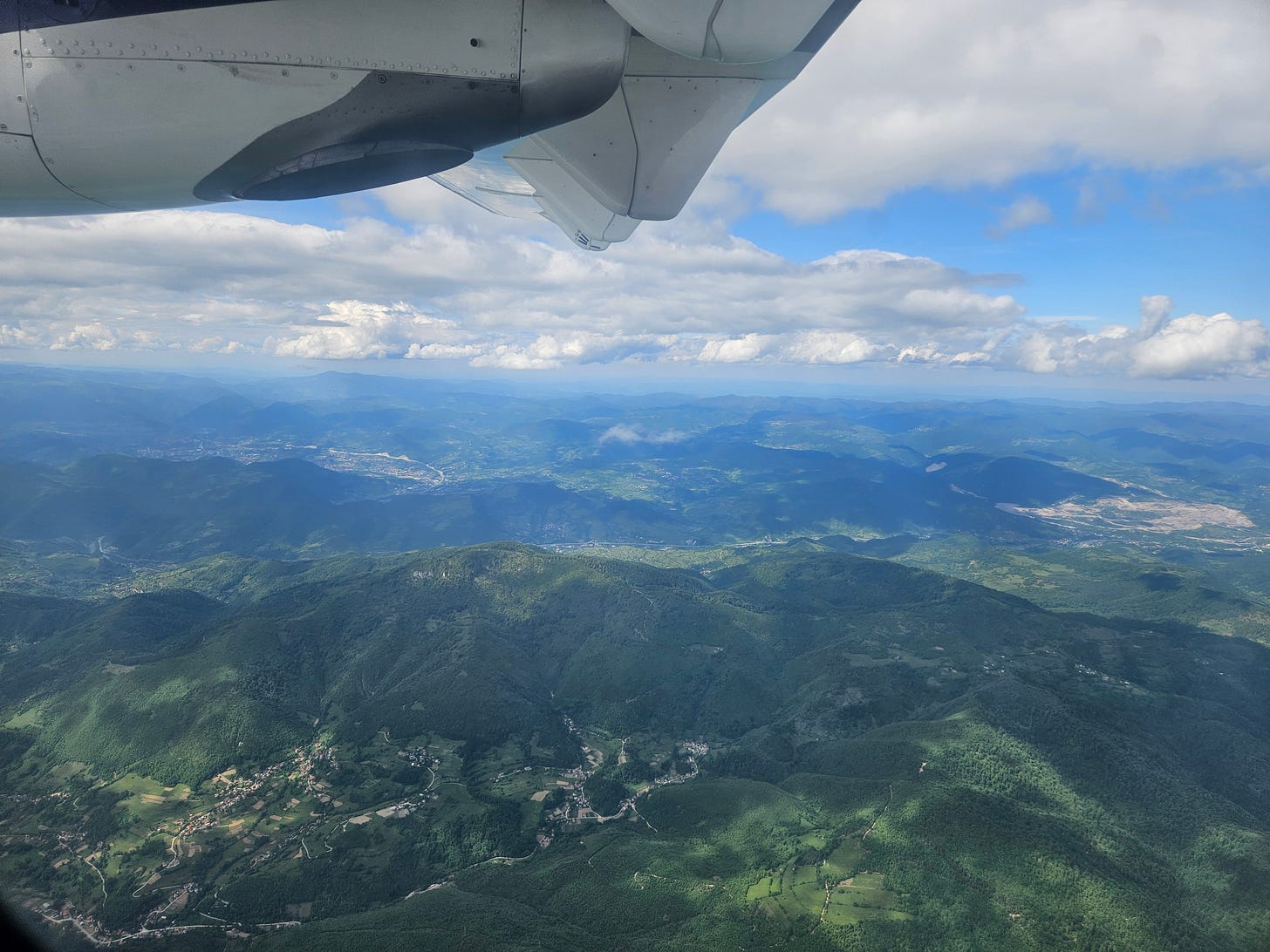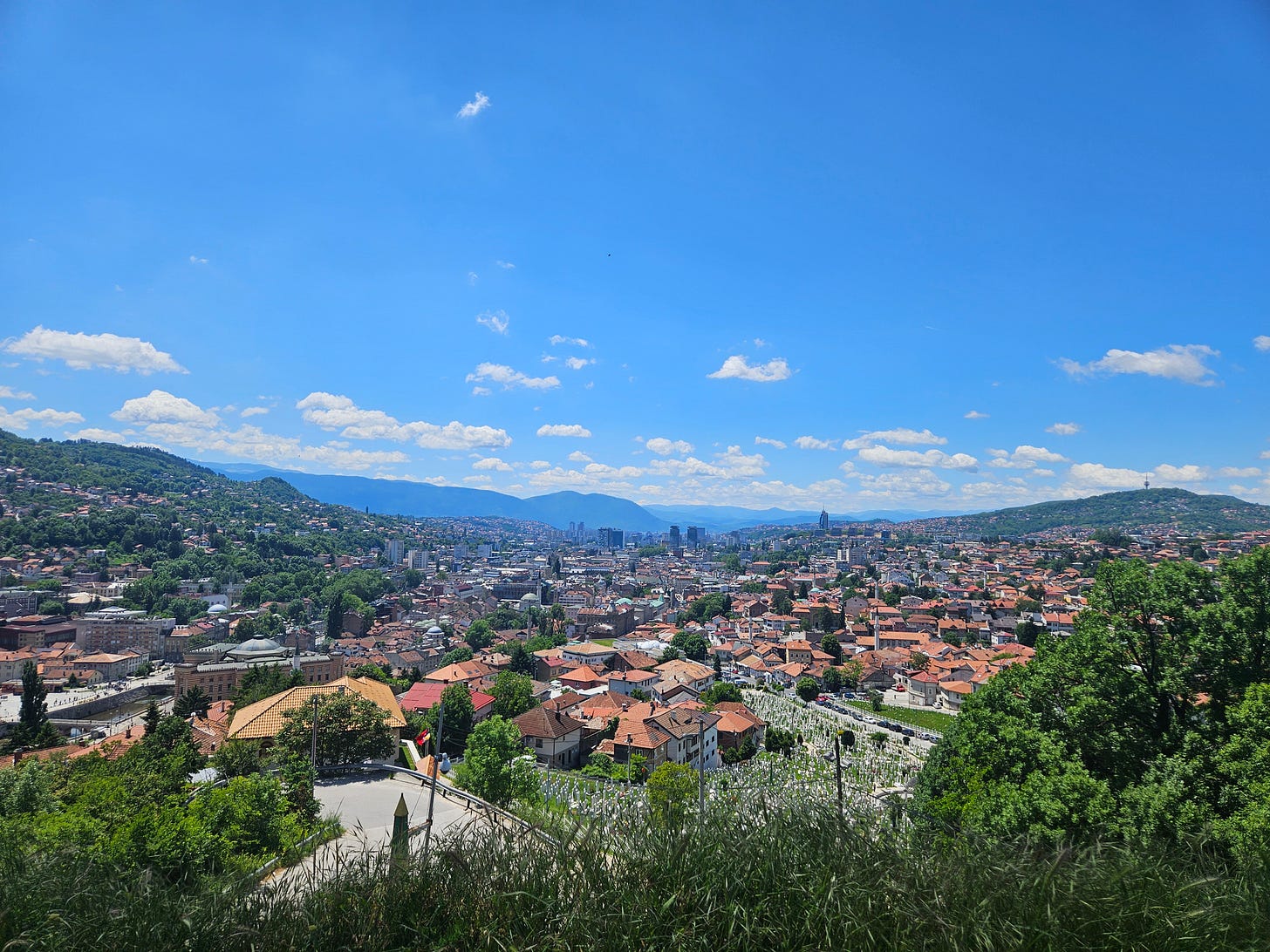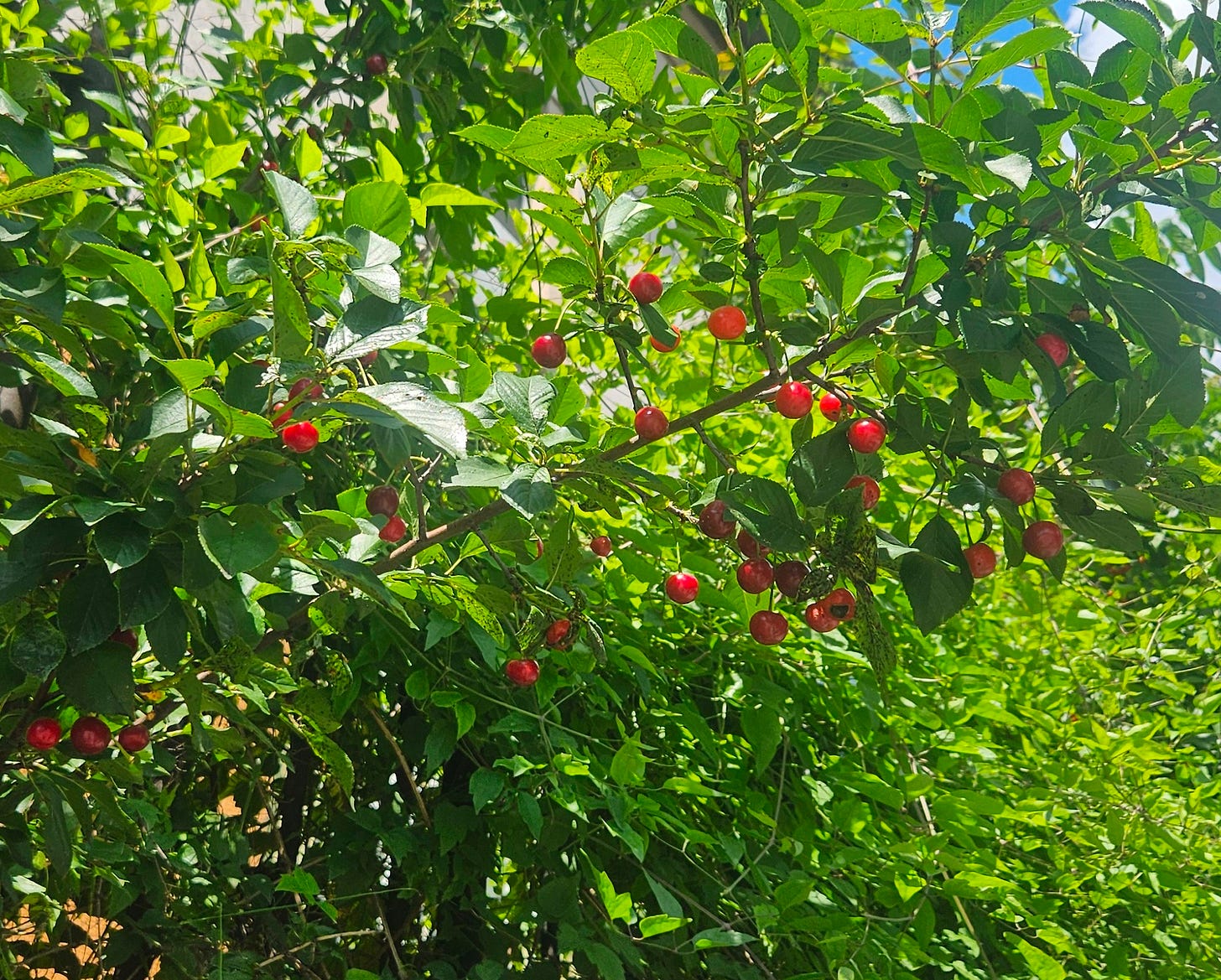If you know me, you know that I have certain connections in Eastern Europe and the Balkans. That may sound ominous to any strangers out there, but all it means is that, across my travels in Bosnia and Herzegovina, Hungary, Romania, Bulgaria, and Turkey, I will be accompanied on and off by various relatives, friends from back home, and local friends and acquaintances. In the interest of keeping this public-facing blog translucently anonymous (and in the interest of protecting the privacy of my family members, friends, and so on), I will keep certain details of my travels vague. I considered taking a break from posting for this part, but I feel sentimentally attached to the weekly post format and am determined to continue as long as it is possible to do so without being bored by my own writing.
Now let’s set off to Sarajevo.
I have been to the city of Sarajevo a few times in my life and every time, I was surprised by what had changed and what had remained the same.
Nestled between mountains, Sarajevo straddles the Miljacka River (and not the Drina or the Danube). It has a historic centre filled with Ottoman-era features; a pretend-Moorish city hall constructed by the Austro-Hungarian Empire in an attempt to please the local population; and a series of stellar, family-friendly, socialist-era housing complexes. It is the only city in the European continent in which someone could stroll past a church, a synagogue, a mosque, and the spot where Franz Ferdinand was assassinated during the same evening constitutional.
The city is also growing. New developments have sprung up in the mountains, a mixed curse which may promise greater revenues or, just as likely, soil erosion. At the same time, features that were long decommissioned during the war have also been revived, including the cable car leading to the hiking trails on Trebević, a friendly local mountain.*
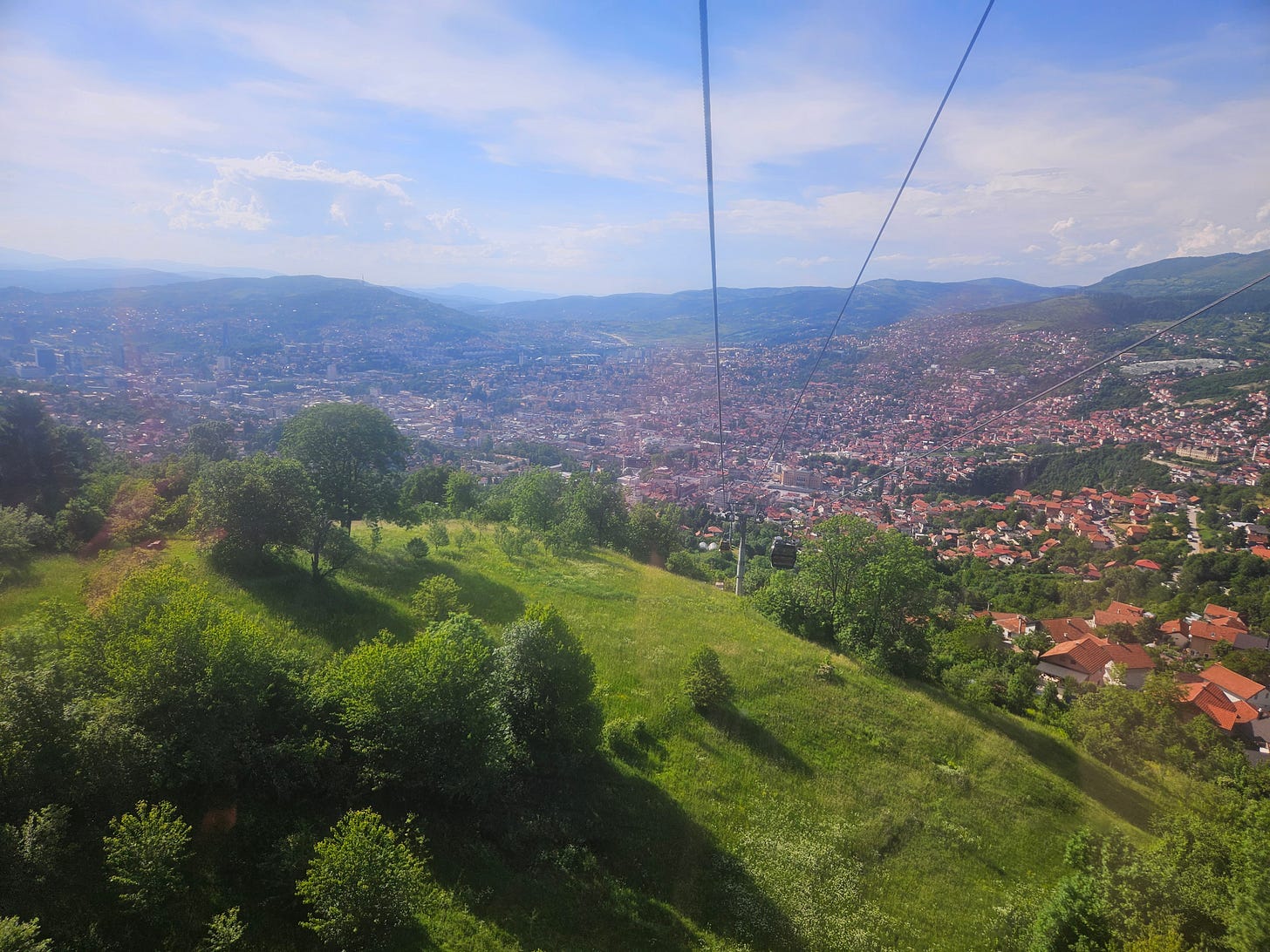
What surprised me most was my visit to Baŝĉarŝija, which, oddly, was filled with Turkish cafes, Turkish signage, and a somewhat Disney-fied Turkish ice cream vendor, complete with a fez. Baŝĉarŝija was built at the start of Ottoman rule in the city, so I suppose some of this makes sense.
However, many of these things were new (to me, since my last visit to the city), and seemed to me to have the effect of somewhat diminishing the distinct culture of the space. Many of the trinkets being sold in the gift shops were identical to ones I had seen (and indeed purchased) years ago in the Grand Bazaar in Istanbul. Others were identical to the trinkets I saw in Barcelona, or other parts of Europe on my prior and subsequent travels (with the addition of Sarajevo-specific inscriptions). Now that I mention all this, I wish I’d taken a photo.
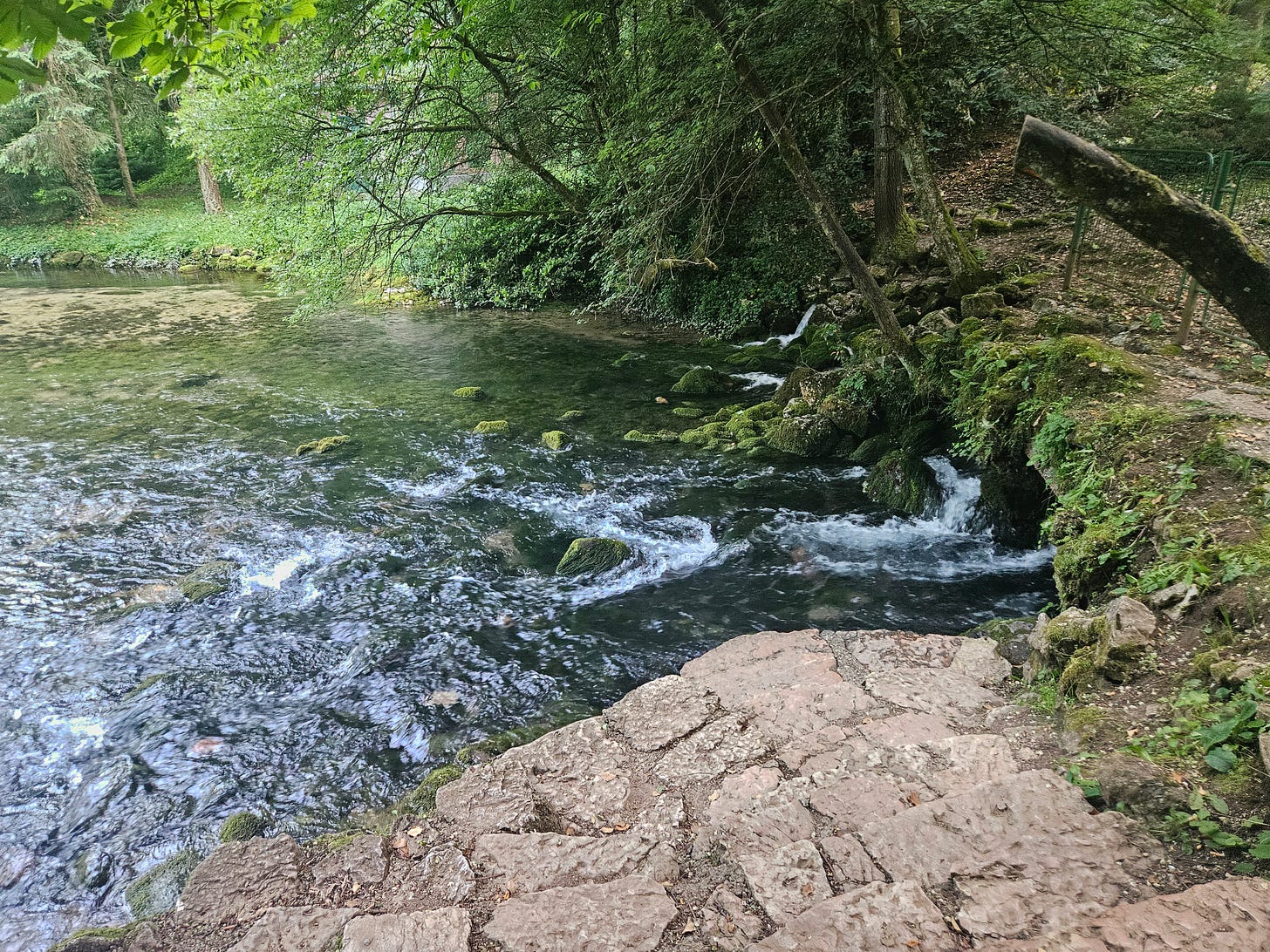
All this makes me wonder what I will see when I get to Istanbul. What trinkets populate the Grand Bazaar nowadays? As someone who remembers Sarajevo in 2005, when some of these tourist shops sold bullet casings purportedly left over from the war, this not-quite-Europe-not-quite-Turkiye Baŝĉarŝija re-brand struck me this time around.
*Quality of being steep and deep.
** Mount Trebević was declared landmine-free in 2020, and the city of Sarajevo and several surrounding municipalities were declared landmine-free in May 2021.
Terms of Engagement
The results of last week’s survey are in. I am extremely lucky to have many sensible friends and acquaintances, and perhaps even luckier to have 3 upstanding citizens who set no budget at all when they travel. May ye all taste the fruit of life.
Today’s poll is about the educational value of this newsletter. Did you learn something that you didn’t know before while reading my proof of life?
Sponsor
This week’s post is sponsored by vişne (or višnja if you prefer), the sour cherries of my dreams.
